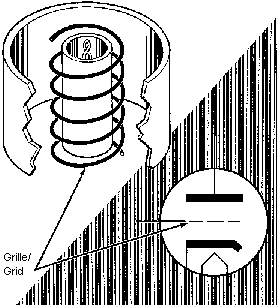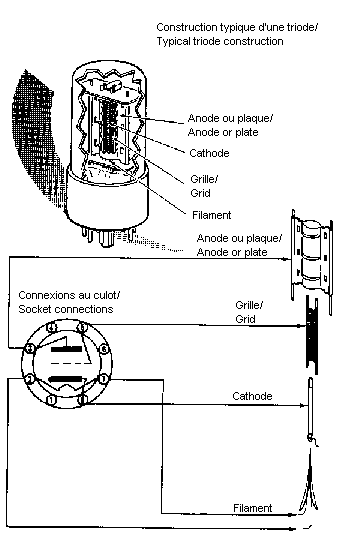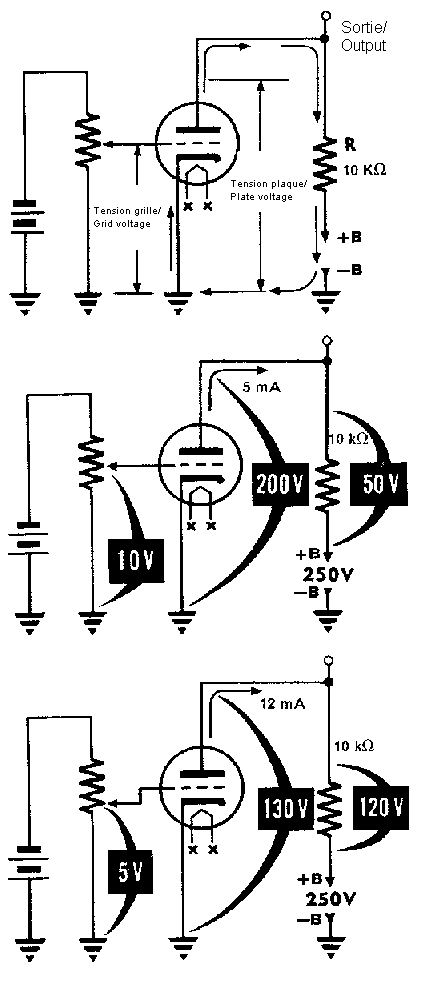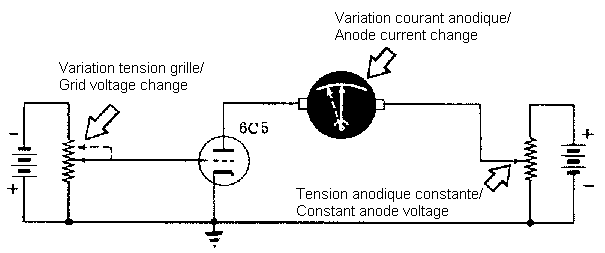
Electric charges of the same polarity repel each other thus a negative charge, with its excess of electrons, applied to the grid push back the electrons coming from the cathode.
The electronic era was starting ...
Back to home page
Back to audio
electronics page
Back to initiation page
 |
After the diode invention, Lee de Forest
had the idea to put a grid between the cathode and the
plate. By applying a variable negative voltage, he
managed to vary the current flowing through the tube. Electric charges of the same polarity repel each other thus a negative charge, with its excess of electrons, applied to the grid push back the electrons coming from the cathode. The electronic era was starting ... |

 |
A highly negative grid can stop completely the current flowing in the tube. A less negative grid lets a small current flowing. A grid at the same voltage than the cathode lets a high current flowing. A positive grid not only drives the tube to saturation (the current will no more increase after a certain level) but a grid current appears also. |

the variations of the grid voltage provoques a variation in the tube and plate resistor current and thus a voltage variation at each side of this resistor (U=R.I).

With a constant plate voltage, a variation of the grid voltage gives a variation of the plate current.

With a constant grid voltage, a variation of the plate voltage gives a variation of the plate current.

In this example, a change of 2V in the grid voltage gives the same current change as a plate change of 40V.
 |
= Ri.S |
where Up = plate voltage
Ug =
grid voltage
Ri =
internal resistance of the tube
S =
tube slope
The amplification factor of a tube is called "miu" and,
in this example, equals 20.
With a constant grid voltage.
![]()
where Up = plate voltage
Ip =
plate current
Ri =
internal resistance of the tube in Ohms
![]()
where Ri = internal resistance of the tube
Ug =
grid voltage
Ip =
plate current
S =
tube slope in A/V or mA/V
The gain of a tube stage, whatever the tube type, is computed by:
![]()
where Ri = internal resistance of the tube
Rp =
plate resistor
 |
This curve indicates the plate current variation when applying a variable grid voltage and a constant plate voltage. The linear part indicates the grid voltages where the tube could operate with low distorsion. in this example, the cut-off voltage is around -14V. Its a typical figure of an audio amp.
To obtain big variations in the plate current, it's
much more effective to apply a variable voltage to the
grid than to the plate. You can see that a lower grid voltage gives a higher plate voltage. The signal is inversed. |